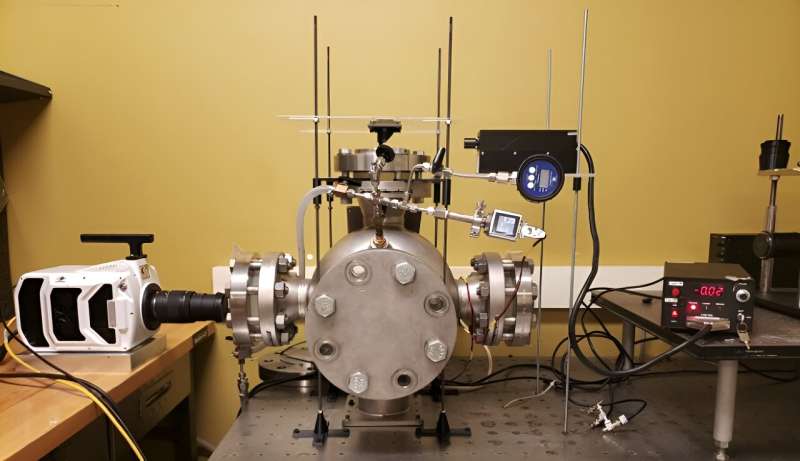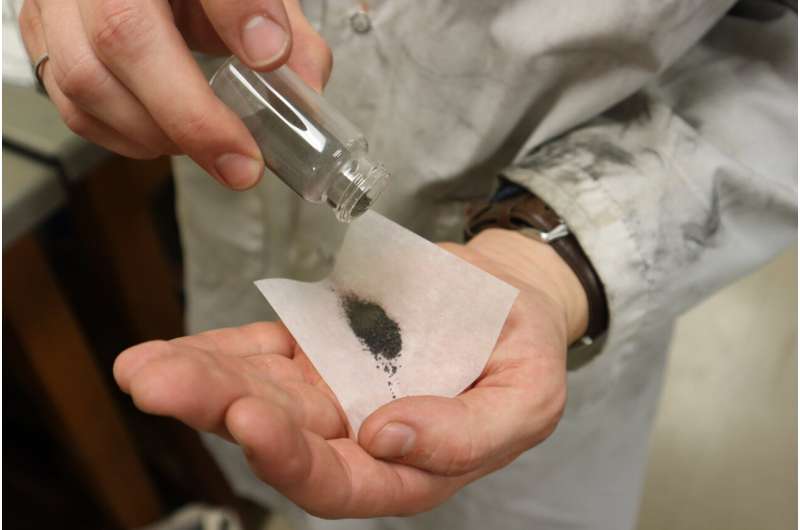This article has been reviewed according to Science X's editorial process and policies. Editors have highlighted the following attributes while ensuring the content's credibility:
fact-checked
trusted source
proofread
Using the moon's soil to support life, energy generation and construction

Imagine the moon as a hub of manufacturing, construction and even human life. It's no longer a far-fetched idea baked in science fiction lore—increased interest and investment in space exploration are pushing efforts to develop the technologies needed to make the moon a viable home for humans.
Developing lunar infrastructure requires building materials, and shuttling these over from Earth would be costly and inefficient. This has fueled research into the in-situ processing and use of raw materials naturally found on the moon's surface. However, one major challenge with this approach will be the immense amount of power the lunar resource processing will need.
A research team from the University of Waterloo's Laboratory for Emerging Energy Research (LEER) is looking into processing lunar regolith, the moon's top layer of soil and dust, into usable materials for life support, energy generation and construction. This includes investigating the use of defunct satellite material as a fuel source when mixed with lunar regolith. The International Astronautical Federation has published two papers on the research.
"Lunar regolith contains lots of metallic dust embedded with oxygen," said Connor MacRobbie, a Ph.D. candidate supervised by professors Dr. John Wen and Dr. Jean-Pierre Hickey in Waterloo's Department of Mechanical and Mechatronics Engineering.
"Because it already contains oxygen, we can utilize it, without the need for atmospheric oxygen, to produce thermal energy," MacRobbie said. "This is called a thermite reaction, which is useful in space because there is no readily available oxygen."
The LEER team conducted experiments using simulant "lunar" regolith synthesized and supplied by the National Aeronautics and Space Administration agency (NASA). Tests were performed at different fuel and oxidizer compositions and with varying particle sizes to control the energy release rate of a space-based thermite for either heating or manufacturing.
"The results demonstrate the viability of the moon's topsoil to power lunar development, enabling humans to explore and inhabit the moon's surface," said Wen, the director of LEER.
"We're now continuously working at better extraction of metal and other useful material from the regolith as well as designing automated processes, in collaborations with Canadian and international researchers, to facilitate in-situ resource utilization and support the circular space economy."
A potential threat to humanity's future in space is the millions of bits of fast-moving debris that travel between Earth and the moon's orbits. The European Space Agency (ESA) equates a collision with a one-centimeter particle of space debris traveling at 10km/s to that of a small car crashing at 40 km/h.
The LEER research team is working to address this problem by recycling defunct satellite material into a fuel source for space development.

"Defunct satellites have enormous potential value," said MacRobbie. "They're made up of many useful materials, including aluminum, which, when added to lunar regolith, can produce a thermite reaction and generate heat."
Using the thermite reaction to repurpose salvaged space debris also provides materials for maintaining and developing solar satellite systems in space, ensuring power for further space exploration.
"Our research is turning science fiction into reality," says MacRobbie. "Our goal is to help build the infrastructure and technology that will allow sustainable human settlement on the moon—and beyond."
More information: Macrobbie et al. Leveraging the use of Novel Lunar ISRU and ISRP Processes with Space Based Solar Power. International Astronautical Federation (2023). www.spacecanada.org/docs/2023- … cond-Place-Paper.pdf
Macrobbie et al. In-situ Regolith based Nanothermite Heating for Lunar Rovers and Equipment during the Lunar Night. International Astronautical Federation (2023). iafastro.directory/iac/archive … /IAC-23/D3/2A/77684/
Provided by University of Waterloo





















